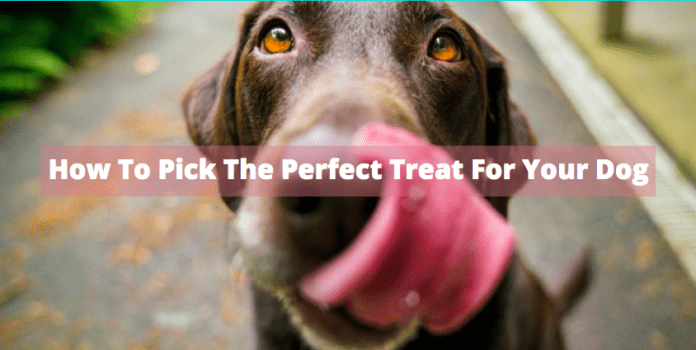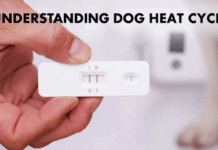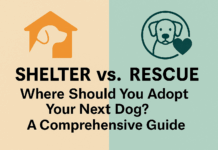Last Updated on November 6, 2021 by Dogs Vets
How To Pick The Perfect Treat For Your Dog
There are several great reasons to reward our dogs with treats. From the well-performed trick to good behavior to just looking downright too cute, for many dogs, treats are a very common occurrence. This makes finding the perfect treat a big priority for many pet owners.
But let’s admit it. The treats we often give our dogs aren’t the best. From ones with too many calories to ones with potentially dangerous ingredients for their health, the dog treat has gotten a bad rap.

It’s said the right treat makes the best reward, but boy can it be difficult finding the right treat for our puppers.
But don’t worry, we’re here to help! We’ll show you the essentials for selecting an exceptional dog treat. As well, we’ll cover how companies like InnovetPet are putting a healthy spin on the classic dog treat.
What To Look For In The Perfect Treat
Let’s face it, there is a seemingly endless ocean of dog treats to choose from. But from unhealthy treats due to poor and sometimes dangerous ingredients, high calories, and on, finding the perfect treat is often anything but easy.
To help you find the perfect treat for your dog, we put together a list of four crucial things that can help make the search a quick and painless process.
1. Made with natural ingredients
You always want to look for dog treats made with natural ingredients and free of preservatives such as propylene glycol and BHT. Avoiding treats made with artificial colors and flavors is potentially a great idea as well.
2. Choosing the right size and texture
It’s better to favor giving your dog smaller treats or choosing bigger treats that are easily broken into more appropriate size portions vs. large hard-to-break treats.
Treats with a softer texture are often great for small and senior dogs, however, the occasional bully stick is often the perfect chewy but hard treat for cleaning their teeth up.
3. Watching high calories
Veterinarians recommend calories from treats never exceed 10% of a dog’s total daily calorie intake. Not only does this help discourage weight gain, but it will also help ensure your dog is getting all the vitamins and minerals they need.
Single source protein treats like freeze-dried chicken treats are a great idea for overweight pets who can still have a daily treat.
It’s understandable to want to share your delicious snack with your dog, and it’s often fine, but pay attention to portion size.
A dog’s taste is heavily based on their smell, meaning big and small pieces of food are nearly equally flavorful for them. This makes splitting a large treat into multiple pieces a wonderful idea.
4. Healthier than the average treat
Treats are often associated with poor health, but it doesn’t have to be this way! While it’s true the old-style dog treat was anything but the standard of good health, many of today’s treats offer exceptional benefits to health.
From healthy daily multivitamins that feature scrumptious ingredients without busting a gut to treats featuring ingredients that can help calm anxiety and promote wellness, the modern dog has a lot of fantastic treat options.
A Spin on The Classic Dog Treat
With our loveable furry critters like our dogs and cats able to benefit from CBD as much as humans can, CBD dog treats have become all the rage. And we love them because they put a healthy twist on the dog treat while remaining just as insatiable as your classic treat.
Taking a look at CBD treats by Innovet, we find they meet our markers when it comes to them using natural ingredients with zero negative additives, along with providing different treat sizes/textures. Make sure any CBD treat you pick up does the same.

With CBD treats, choosing the right size treat is ever more crucial than it is with a regular treat because while CBD is typically well-tolerated, a large dosage can cause sleeplessness along with potential stomach discomfort.
CBD Oil
Treating your pup to better health can be a treat in itself, and with CBD oil, we can do just that. CBD is a multi-faceted holistic aid derived from hemp plants that capture many of the health benefits ascribed to marijuana, in particular, medical marijuana.
However, it avoids the high that can be induced by marijuana, thanks to hemp plants lacking the main chemical behind marijuana’s high.
With hemp CBD sharing many of medical marijuana’s benefits, both humans, dogs, and cats have a much safer option to enjoy cannabis’ ability to help lower anxiety, reduce pain, mediate excessive inflammation, quell seizure rates, and more. CBD is federally legal in the United States, along with many other countries around the world.
Conclusion…
We hope you enjoyed this article… What are your thoughts on How To Pick The Perfect Treat For Your Dog?
Please feel free to share with us in the comments section below.

















